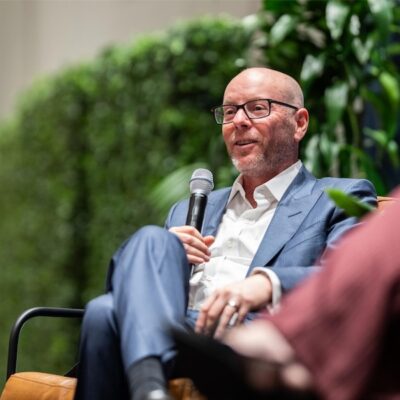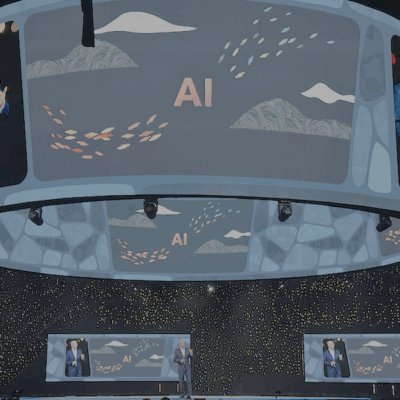Creating a natural workplace
Jeff Rodman explains how digital transformation is driving innovation, collaboration and…
Jeff Rodman explains how digital transformation is driving innovation, collaboration and creativity in the workplace.
On a recent visit to the ANZ region, I was fortunate to meet with a diverse group of businesses. We discussed digital transformation, innovation and the sweeping changes that companies of all sizes are seeing inside their own workplaces. Changes driven by the globalisation of commerce and enabled by the rapid acceleration of technology.
In Australia and New Zealand, the pressing need for transformational change is clearly a common issue and many companies are also figuring out how they can create more flexible working environments. Perhaps, not all that surprising, when you consider the numbers. Industry analysts IDC New Zealand predict that the technologies driving digital transformation will be responsible for more than 75 percent of New Zealand IT spending by 2019.
With this massive influx of technology and connectivity, it’s undeniable that workplaces are moving from the traditional idea of what most of us know as ‘the office’ and this is accelerating worldwide. Globally, we are seeing that the use of contract non-employee workers, both independent contractors and contract services, is growing as an industry. Let’s explore this in more detail.
Redesigning the traditional office
There used to be a time when a person’s career path or seniority could be tracked by their progression from cubicle to private office. However, the way we work today is different – companies are creating more open, more natural and agile workplaces. They are also finding that people are more empowered by working how, where and when they want – so the focus of workplace design becomes to serve and connect these people, rather than merely to contain them.
Workplace transformation includes fragmentation of the typical design and layout templates of offices, cubicles and conference rooms into a vigorous diversity of working environments. There are individual workplaces, where we don’t need to have anyone physically nearby and there are group workplaces, where having more people right next to us is part of the experience. In either case, we can be collaborating with other people in multiple locations from a choice of devices.
Each kind of workspace has its advantages, but one of the challenges added by open-office and open-group settings is that extraneous noise and distractions increase as partitions are lost and the spaces are opened up. It’s for this reason that workplace innovations are needed that prioritise the user’s experience and this can mean developing new technologies to restore a worker’s quieter and more productive personal environment even when they’re sitting in a busy open area.
The rise of small group collaboration
Our own Workplace of the Future research found that 82 percent of ANZ businesses also believe the labour market is changing due to an increased use of freelance and contract workers. This, combined with a shift towards flexible working, indicates that the workforce of the future will have vastly different collaboration needs.
In fact, collaboration is turning from a ‘nice to have’ option into a business survival tool, whether it’s among the people and teams within a company, or with outside resources. SMEs and startups tend to be less constrained by old-style thinking, so collaboration happens more naturally rather than as a defined “innovation”.
Providing flexibility in the workplace
I believe that when a workforce is provided the flexibility to work how and where they feel most effective, it brings creativity and natural communication back into focus. Whether it’s from an armchair, or from a standing desk, an agile and flexible workplace becomes about creating the right environment for individuals and teams to work together in order to deliver results.
You only have to look at what’s happening inside an organisation like MYOB. They started from a home office, and have created a dynamic ‘Workplace of the Future’ built on the premise of agile working and innovation.
Every day, over 200 engineers and developers across Australia and New Zealand meet to share code, create software, and do the numerous tasks needed to keep MYOB humming. What is so phenomenal about their use of technology is that it is not confined to any one meeting room or space – instead, developers and employees are free to walk up to a mobile cart, wheel it to their preferred space and instantly collaborate. No meeting rooms to be booked, no calendar appointments necessary, and these creative minds are enabled to exchange ideas and plans as they require! Today, the company has seven sites across Australia and New Zealand, servicing over 1.2 million businesses across the region.
Big ideas from small spaces
I’ve often been quoted as saying that there’s a big advantage in starting small – in fact, the company I co-founded first established roots in a San Francisco basement back in 1990!
It’s valuable to have a big vision, almost essential if you want to grow big, but it has to be implemented in smaller bites that you can fully understand and manage. This includes retaining the ability to work in small groups, including individuals, rather than falling back on the 1900’s vision of a big building with everyone tethered inside. What we’ve demonstrated, as have many others, is that big ideas can grow from small spaces merely by providing the flexibility and tools for people to connect, share, and come together as teams.
Innovation comes in many shapes and forms. Sometimes the best ideas really do start from something really small.






